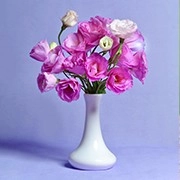Sculpture Shapes Cities

Have you ever walked through a city and paused at a sculpture that caught your eye? Sculpture is more than just art placed outdoors—it plays a vital role in shaping the aesthetic experience of urban environments.
From small statues in parks to monumental installations in plazas, sculptures influence how we perceive, enjoy, and connect with city spaces. This article explores how sculpture impacts urban aesthetics and why it matters for city planning and culture.
The Role of Sculpture in Urban Design
Sculptures serve as visual anchors and landmarks within cities. Urban designers often incorporate them to break the monotony of buildings and streets, adding layers of meaning and texture. By introducing three-dimensional forms, sculptures create focal points that draw attention and invite interaction. These pieces help organize space, guide pedestrian flow, and enrich public areas, making cities more engaging and memorable.
Enhancing Public Spaces with Art
Public spaces such as parks, squares, and waterfronts benefit greatly from sculptures. Art in these areas encourages people to gather, relax, and socialize. Sculptures can transform otherwise empty or neglected zones into vibrant community hubs. Their presence often inspires local pride and can improve the overall mood of residents and visitors. A well-placed sculpture creates a sense of identity unique to that location.
Reflecting Cultural and Historical Identity
Many urban sculptures commemorate historical figures, events, or cultural themes, serving as tangible links to a city's heritage. These works help residents connect with their shared history and foster a sense of belonging. Beyond memorials, sculptures may express contemporary social values or local creativity, making the cityscape a living gallery of cultural expression. This adds depth and character to the urban environment.
Encouraging Interaction and Engagement
Unlike paintings inside galleries, sculptures in public spaces invite physical engagement. People can walk around, touch, or even climb on some sculptures, making the experience multi-sensory. Interactive sculptures encourage curiosity and playfulness, attracting diverse audiences. This engagement transforms passive viewing into active participation, strengthening community ties and enhancing the public's appreciation of art.
Impact on Mental Well-being
Research in environmental psychology (Empirical Studies of the Arts, 2004) indicates that exposure to art, including sculpture, positively affects mental health. Sculptures in urban settings contribute to reducing stress, encouraging reflection, and stimulating creativity. Green spaces combined with art installations become restorative environments where people can escape the hustle and bustle of city life. This psychological benefit underscores the importance of integrating art into urban planning.
Challenges and Considerations
While sculptures enrich cityscapes, their selection and placement require thoughtful planning. Poorly designed or inappropriate works may clash with the surroundings or fail to resonate with the community. Maintenance and vandalism are practical concerns that cities must address. Successful integration of sculpture demands collaboration among artists, planners, and citizens to ensure artworks enhance rather than detract from urban aesthetics.
The Future of Sculpture in Cities
Emerging technologies like augmented reality and kinetic sculptures are expanding how public art interacts with audiences. Future urban sculptures may incorporate movement, light, or digital elements to create dynamic, ever-changing environments. As cities evolve, sculpture will continue to play a key role in defining urban identity and improving quality of life. Embracing innovation while respecting tradition will shape the next generation of city landscapes.

Conclusion: What Sculpture Moves You?
Sculpture is a powerful tool that transforms ordinary city spaces into places of meaning, beauty, and connection. Whether commemorating history or inspiring creativity, sculptures contribute to how we experience urban life. Next time you stroll through your city, take a moment to notice the sculptures around you—how do they change the way you feel about the space? Which sculpture has left a lasting impression on you? Your perspective helps keep the conversation about urban aesthetics alive and vibrant.

 · Art team
· Art team